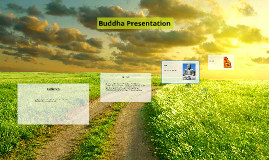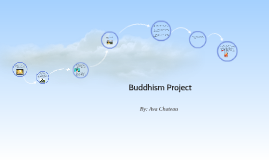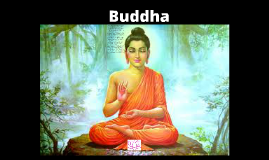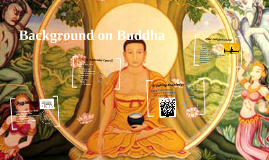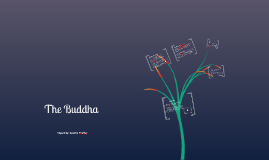Religion Buddha presentation
Transcript: Buddha •In Hinduism, Buddha is regarded as the ninth incarnation of Vishnu, following Ram and Krishna. •When Buddha entered his mother's womb, miraculous things happened. Trees and herbs burst into flower and untouched instruments played beautiful music. •Buddha was born on 563 BC and was named Prince Siddharta and His mother Mahamaya died 7 days later •At the age of 12, Brahman told Buddha's father Buddha would become a great King •He married his cousin Yashoda when he was 29 •Ten years later his son was born, Rahula •He did not get any closer to Brahman, so he became a normal person, ate normal food and gave up his role as a king. •That night, Buddha left his home and lived in the forest to search for enlightenment. •He started to preach, and immediately he gained followers. •He then went back to his wife, who had lived a nun for the time Buddha was away from her. •In 483 BC., at age 54, Buddha left his body. His last words were "work out your salvation with diligence" The term Buddha means "Awakened". As he fully comprehended the Four Noble Truths and as he arose from the slumbers of ignorance he is called a Buddha. In the 5. century BC., an Aryan tribe called the Shakyas was living at Kapilavastu, a state between Benares and the Himalayas. Those people depended mainly on rice and simple food and lived a farmer's life. Suddhodana, raja of the Shakyas was married to two daughters of the raja of the neighbor tribe, the Koliyans. Buddha's conception was miraculous. Mahamaya, the elder wife, had a dream in which she was translated by devas of the four directions to the Himalayas. There she was bathed and ceremonially purified and the Bodysattva appeared, coming from the North in the form of a white elephant. When Buddha entered his mother's womb, great wonders took place, trees and herbs burst into flower and untouched instruments started to play beautiful music. After nine months, in the year 563 BC., Mahamaya gave birth to a boy, but she died seven days later. A short time after his birth, Buddha was named prince Siddharta - Gautama was his family name. When Siddharta was twelve years old, the Brahmans told the king that his son would either become a great king or an ascetic, as the result of seeing problems, disease and death. From that time on, the king took every precaution to keep Buddha far away from the world's problems. The prince lived in a huge palace and had all kinds of comfort and beauty around. Gautama Buddha was early married to his cousin Yashoda, daughter of the raja of Koli. At the age of 29, the problem of suffering, disease and death was impressively set before Buddha. Filled with the thought of the insecurity of all happiness and grief at the sufferings of others, Buddha felt a deep unrest and dissatisfaction with life. After ten years, his son Rahula was born, but Buddha only felt it as one more tie on the way to seek a solution for the problems of the world. During the same night, Buddha left his family and home to search for various Brahman hermits and saints. Dissatisfied with their teachings, Buddha practiced alone in the forest. After enduring the most severe penances for a long period of time, with the greatest determination, Buddha found himself no nearer to enlightenment. Buddha abandoned the life of an ascetic, took regular food, sacrificing his reputation so his disciples deserted him. Buddha wandered along the banks of the river Nairanjara and took seat under a Bo-tree. After sitting there for some time, his mind was clearer and clearer, his doubts vanished and a great peace came over him. Day and night passed and by dawn came perfect knowledge and Gautama became enlightened and became the Buddha. With that enlightenment, there came also a sense of great isolation. How could Buddha share this wisdom with men, less wise and earnest ? Such isolation comes to all great leaders, but love and pity for humanity determined Buddha at all hazard of failure or misunderstanding, to preach the truth that he had seen. Buddha proceeded to Benares to "turn the wheel of the law". Buddha preached the doctrine of nonviolence to all who could hear him. Some became his personal followers, other disciples lived a householder life. Buddha reached many people also from the higher society classes and converted the worshippers of fire by many miracles. Joint Mudra is the basic Yoga for everybody. As the name suggests, this Mudra is very good for relieving joints. It balances energy in the joints and is effective. This mudra should be practised with both hands. This mudra helps to relieve us from severe arthrosis. This mudra balances energy in the joints. There are many dynamic yoga exercises that can be used to help against joint pain. Joint Mudra can be done with both hands. While practising the Joint Mudra, thumb and ring finger of right hand are put together. Thumb and middle finger are brought together of the left hand. Joint Mudra can be done four times day for fifteen minutes. In case of







